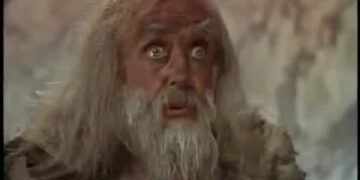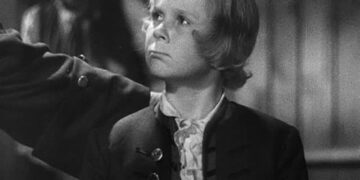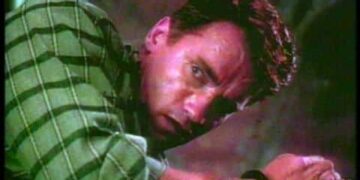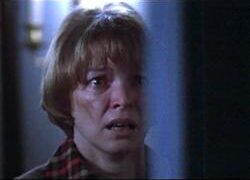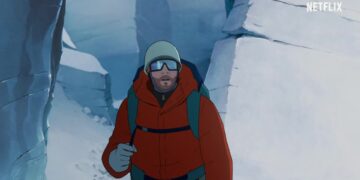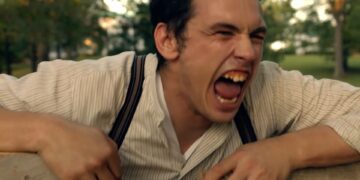Ah, the early 90s – a time when grunge was king, but tucked away in the corners of cinematic history was a film that offered a taste of Southern charm and vintage vibes. “Fried Green Tomatoes” is a feast for the eyes as much as it is for the soul, and as a fashion aficionado with a soft spot for celluloid, I find the aesthetic of this gem worth a deep dive. Let’s peel back the layers of this onion (or should I say tomato?) and explore the sartorial splendor of this timeless classic.
Introduction to ‘Fried Green Tomatoes (1991)’ Aesthetic
There are movies that stay with you, not just because of their emotional storytelling, but also because of their distinctive visual style. “Fried Green Tomatoes” is one such film, where fashion isn’t merely an afterthought – it’s a character in its own right. The film’s aesthetic captures the essence of the South in the early 20th century, juxtaposed with the late 1980s, offering a rich tapestry of styles and cultural references. The wardrobe choices are as much a part of the narrative as the Whistle Stop Café’s famous dish.
- Period Precision: From the flapper dresses of the 1920s to the shoulder pads of the 1980s, the film traverses decades.
- Cultural Context: The ensembles reflect societal norms, personal rebellion, and the transformative power of friendship.
- Symbolic Shades: Colors and fabrics are used symbolically to portray character development and thematic undertones.
The film’s aesthetic is a collage of eras, a sartorial symphony that tells a story of change, resistance, and blooming friendships. It’s a style that’s both nostalgic and timeless, with a pinch of Southern Gothic and a dash of Americana.
Character Analysis and Style Breakdown
Each character in “Fried Green Tomatoes” dons a wardrobe that’s tailored to their narrative arc – a visual representation of their inner journey. The clothes are not just costumes; they are the skins in which the characters grow, fight, love, and ultimately find themselves. It’s a fashion tableau that deserves a standing ovation, and I’m here to give it just that.
Kathy Bates as Evelyn Couch
Evelyn Couch, portrayed by the incomparable Kathy Bates, is an everywoman of the late 1980s – lost in a marriage that’s comfortable yet unfulfilling, seeking solace in candy bars and daydreams. Her style at the start is unremarkable, echoing her feelings of invisibility. But as she listens to Ninny’s stories, we witness a metamorphosis, and her style becomes a visual cue to her awakening.
- Before: Muted tones, loose-fitting garments, and a lack of accessories reflect Evelyn’s initial lack of self-esteem.
- Transformation: As Evelyn’s spirit ignites, so does her wardrobe, with brighter colors and bolder prints signaling her newfound confidence.
- After: By the end of the film, Evelyn’s style is assertive and vibrant, much like her personality.
Evelyn’s journey is one of self-discovery, and her clothing is the chrysalis from which she emerges, vibrant and unapologetic. She teaches us that style isn’t just about trends – it’s a form of self-expression, a way to make the invisible visible.
Mary Stuart Masterson as Idgie Threadgoode
Idgie Threadgoode, played by Mary Stuart Masterson, is the epitome of a rebellious spirit. Her tomboyish charm is reflected in her androgynous attire, a stark contrast to the feminine frocks of the era. It’s a deliberate choice, a sartorial rebellion that mirrors her free-spirited nature and disregard for societal norms.
- Masculine Undertones: Idgie’s preference for trousers, vests, and ties over dresses and skirts challenges the expected gender roles.
- Practicality Over Fashion: Her clothing choices prioritize comfort and functionality, befitting her adventurous and outdoorsy lifestyle.
- Signature Hat: Rarely seen without her signature hat, Idgie’s headwear is as much a part of her identity as her fearless demeanor.
Idgie’s style is more than just a fashion statement; it’s a declaration of independence. She dresses for herself, and her authenticity is as refreshing as the lemonade at the Whistle Stop Café.
Mary-Louise Parker as Ruth Jamison
Ruth Jamison, portrayed by Mary-Louise Parker, is the counterbalance to Idgie’s wild nature. Her style is soft, feminine, and traditional. It speaks of her upbringing and her initial adherence to the expectations of her time. Yet, as Ruth’s story unfolds, her style subtly shifts, reflecting her growing strength and independence.
- Feminine Silhouettes: Ruth’s early wardrobe features delicate dresses with defined waists, lace collars, and soft colors.
- Subtle Shifts: As Ruth becomes more intertwined with Idgie’s world, we see her in more practical attire, blending her softness with strength.
- Accessories: Her choice of accessories, from simple pearl earrings to the locket she wears, hints at her depth and the secrets she harbors.
Ruth’s style evolution is gentle but powerful. It’s about finding balance, blending softness with resilience, and her fashion choices mirror this beautifully.
Jessica Tandy as Ninny Threadgoode
Ninny Threadgoode is the storyteller, the keeper of history, and Jessica Tandy brings her to life with a grace that is palpable. Her style is that of a Southern lady past her prime, but her clothes still whisper tales of the years gone by. Her wardrobe is a mix of nostalgia and comfort, a nod to the past while still being rooted in the present she inhabits.
- Timeless Elegance: Ninny’s attire, with its floral prints and cardigans, is classic and age-appropriate.
- Storytelling Through Clothing: Each piece Ninny wears feels like it has a backstory, much like the tales she recounts to Evelyn.
- Hints of the Past: While her clothes are contemporary to the 1980s setting, there are elements, like a vintage brooch or a classic cut, that link her to the film’s flashbacks.
Ninny’s fashion is a bridge between the film’s two timelines, a visual narrative that ties the past to the present. Her attire is more than just old-fashioned; it’s a testament to enduring style.
Cicely Tyson as Sipsey
Sipsey, played by Cicely Tyson, may not have as much screen time as the others, but her presence is undeniable, and her style is a reflection of her role in society during the era. Her clothing is simple, functional, and unpretentious, yet she carries herself with a dignity that elevates her ensemble to something special.
- Workwear Roots: Sipsey’s clothes are practical, made to withstand the rigors of kitchen work and domestic chores.
- Quiet Strength: Her attire is modest, often featuring aprons and headscarves, but there’s a quiet strength in her simplicity.
- Cultural Significance: Her style also reflects the cultural heritage of African American women in the South during the early 20th century.
Sipsey’s aesthetic is understated yet powerful, a sartorial nod to the countless women like her who played pivotal roles in their communities with grace and resilience.
Chris O’Donnell as Buddy Threadgoode
Chris O’Donnell’s Buddy Threadgoode is the embodiment of youthful charm and innocence, with a style that’s casual, clean-cut, and quintessentially American. His clothing is unassuming yet perfectly captures the essence of a Southern boy in the 1920s.
- All-American Boy: Buddy’s wardrobe consists of simple shirts, overalls, and sometimes a newsboy cap, encapsulating the all-American look.
- Subtle Details: The fit and cut of his clothes, though not flashy, are tailored to reflect his character’s affable nature.
- Symbolism: His untimely death is foreshadowed by the pristine white of his clothes, an innocent canvas cut short.
Buddy’s style is as endearing as his character, a reminder of the simplicity and purity of youth, and how fashion can be both timeless and evocative.
Stan Shaw as Big George
Big George, played by Stan Shaw, is a gentle giant of a man whose wardrobe is as straightforward as his character. His style is utilitarian, a reflection of his position in society, but it’s worn with a dignity that speaks volumes.
- Functional Fashion: George’s attire typically consists of durable work shirts and slacks, befitting his role as a cook and handyman.
- Subdued Palette: His clothing colors are often subdued, mirroring his quiet and unobtrusive nature.
- Respectful Representation: His wardrobe accurately represents the working-class African American men of the era without succumbing to caricature.
Big George’s style is about function over form, but through his portrayal, we’re reminded that there’s beauty in simplicity and strength in humility.
Styling Tips for Different Occasions
Now, let’s take these characters out of the Whistle Stop Café and into our modern world. How can we translate their iconic styles into today’s fashion landscape for different occasions? It’s all about capturing the essence rather than mimicking the exact look.
How to Include Elements of ‘Fried Green Tomatoes (1991)’ Aesthetic into Your Wardrobe
Incorporating elements of the “Fried Green Tomatoes” aesthetic into your wardrobe doesn’t require a time machine or a complete style overhaul. It’s about embracing the spirit of the film’s fashion and making it work for you.
- Vintage Flair: Add a touch of the 1920s or 1980s to your ensemble with a vintage accessory or garment.
- Color and Prints: Take inspiration from the film’s color palette and prints to add depth to your outfits.
- Gender Bending: Channel your inner Idgie with androgynous pieces that blur gender lines, like a blazer or oxfords.
By infusing these elements into your style, you pay homage to the film while keeping your look fresh and personal.
Get the Look: Summary of Outfits and Where to Buy Them
If you’re itching to get the “Fried Green Tomatoes” look, here’s a quick rundown of outfits inspired by the movie and suggestions on where you might find similar pieces.
- For Evelyn’s Transformation: Look for bold prints and colors in plus-size sections of stores like Torrid or ASOS.
- Idgie’s Androgyny: Shop for vests, high-waisted trousers, and vintage hats at thrift stores or online marketplaces like Etsy.
- Ruth’s Femininity: Seek out lace collars, delicate dresses, and soft pastels at boutique shops or websites like ModCloth.
Remember, it’s not about costume replication; it’s about capturing the spirit of the film through fashion.
Conclusion: Embrace Your Inner ‘Fried Green Tomatoes (1991)’ Aesthetic
Diving into the “Fried Green Tomatoes” aesthetic is like savoring a dish from the Whistle Stop Café – it’s rich, fulfilling, and leaves a lasting impression. Whether you’re drawn to Evelyn’s bold colors, Idgie’s rebellious streak, or Ruth’s delicate femininity, there’s something in this film’s style for everyone. Fashion is a language, and the characters of “Fried Green Tomatoes” speak it fluently, telling stories of love, loss, and the power of friendship.
Take a page from their book and let your wardrobe tell your story. Mix in a little Southern charm, a touch of vintage flair, and a dash of cinematic magic, and you’ve got a recipe for a style that’s uniquely yours. Share your unique style tips in the comments and revisit us for the latest updates on fashion advice and exclusive deals! And remember, the secret’s in the sauce – or in this case, the style.


